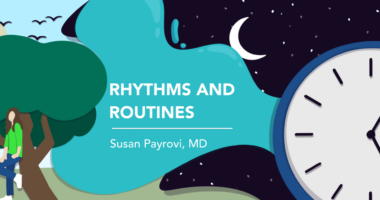MS Misdiagnosis Too Common, Puts Patients in Unnecessary Peril from Therapies, Study Reveals

Nearly 18% of new multiple sclerosis (MS) patients referred to two speciality clinics in Los Angeles, California, had been misdiagnosed with the disease, according to a recent study.
Most of them actually were affected by migraines, among other conditions, and had been taking MS medications unnecessarily for years, many of which have an associated risk of serious side effects to the brain.
The findings are in the study “Incidence of multiple sclerosis misdiagnosis in referrals to two academic centers,” published in the journal Multiple Sclerosis and Related Disorders.
Although misdiagnosis of MS is a reality, with all that implies for patient morbidity and healthcare costs, the actual frequency of such cases is unknown.
Researchers at the Cedars-Sinai Multiple Sclerosis and Neuroimmunology Center, in collaboration with researchers from University of California, Los Angeles (UCLA), and the University of Vermont, were interested in filling this knowledge gap.
To determine how many patients were misdiagnosed with MS, and identify what they might have in common, researchers reviewed 241 new referrals to two MS clinics — the Cedars-Sinai and UCLA — of patients who had been diagnosed with MS by other doctors.
After re-evaluation at the clinic, 17% of the patients at Cedars-Sinai and 19% at UCLA were determined to have been incorrectly diagnosed with MS.
Want to learn more about the latest research in MS? Ask your questions in our research forum.
Most of these patients then were diagnosed with migraine (16%), followed by radiologically isolated syndrome (9%) — a condition in which brain MRI findings resemble those of MS, but whose patients experience none of the symptoms characteristic of MS. There also were patients who had spondylopathy (a disorder of the vertebrae, 7%), and neuropathy (nerve damage, 7%).
“The diagnosis of MS is tricky. Both the symptoms and MRI testing results can look like other conditions, such as stroke, migraines and vitamin B12 deficiency,” Marwa Kaisey, MD, MS specialist at Cedars-Sinai, and lead author of the study, said in a press release.
“You have to rule out any other diagnoses, and it’s not a perfect science,” Kaisey added.
The majority of those misdiagnosed — 72 percent — had been prescribed MS treatments, and nearly half of those (48%) had been taking therapies with a known risk of serious side effects, namely progressive multifocal leukoencephalopathy, a viral infection that causes gradual damage to the white matter of the brain.
“I’ve seen patients suffering side effects from the medication they were taking for a disease they didn’t have,” Kaisey said. “Meanwhile, they weren’t getting treatment for what they did have. The cost to the patient is huge — medically, psychologically, financially.”
The misdiagnosed patients analyzed spent, on average, four years receiving treatment for MS. The researchers estimate that about 110 patient years of unnecessary MS disease-modifying therapy were used in just this group of patients. Those treatments were calculated to have cost almost $10 million.
“MS misdiagnosis is common; in our combined cohort, almost 1 in 5 patients who carried an established diagnosis of MS did not fulfill contemporary McDonald Criteria [current guidelines for diagnosing MS], and had a more likely alternate diagnosis,” the researchers wrote.
The team is now investigating new MS biomarkers and trying to improve imaging techniques, to help doctors reach a more accurate diagnosis and reduce the number of MS misdiagnoses.






